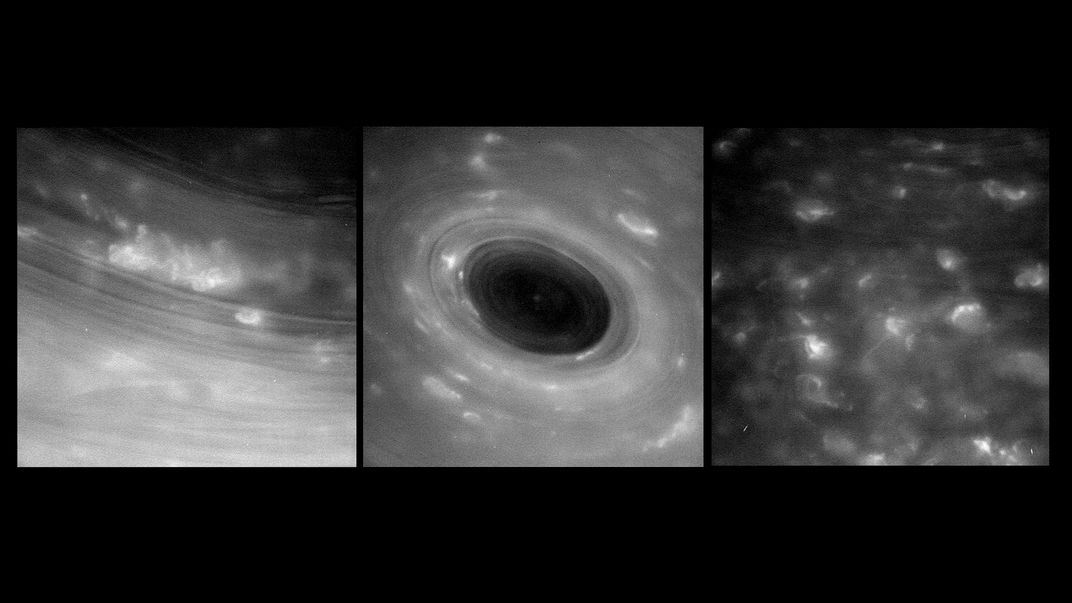Cassini Sends Back First Images From Its Saturn Dives
The stream of raw images include new pictures of the strange hexagonal storm swirling around its north pole
/https://tf-cmsv2-smithsonianmag-media.s3.amazonaws.com/filer/84/5d/845d01c6-411d-4565-af72-2a364a78b63c/cassini_atmosphere.jpg)
Yesterday, space lovers everywhere held their breath as the Cassini space probe began a potentially dangerous dive between Saturn’s atmosphere and its system of rings. In the wee hours of this morning, NASA established that Cassini had survived. Now the little craft has begun sending back a stream of images that are the closest look at Saturn’s atmosphere yet.
Cassini was launched in 1997 on a mission to explore Saturn and it’s various moons. Over the years, it’s sent back a massive amount of data, including the recent discovery that potentially microbe-friendly hydrogen is spouting from the icy moon Enceladus. But Cassini has come to the end of its fuel and is now beginning its grand finale mission in which it will dive between Saturn and its rings once a week for 22 weeks, beaming back info on the planet’s atmosphere and magnetic field. On September 15, Cassini will make a dramatic exit, crashing into Saturn's atmosphere.
According to a NASA press release, Cassini came within 1,900 miles of the tops of Saturn’s clouds and about 200 miles from the inner rings. While mission control didn’t think there was anything in that gap that could damage the craft, they couldn't be completely positive. So they positioned Cassini’s dish-shaped high-gain antenna as a shield.

“No spacecraft has ever been this close to Saturn before. We could only rely on predictions, based on our experience with Saturn's other rings, of what we thought this gap between the rings and Saturn would be like,” Cassini Project Manager Earl Maize of NASA's Jet Propulsion Laboratory says in the press release. “I am delighted to report that Cassini shot through the gap just as we planned and has come out the other side in excellent shape.”
According to the European Space Agency, Saturn’s atmosphere is very complex. NASA hopes the Cassini dives will help provide more data about its makeup. The ESA reports that it is composed of 75 percent hydrogen and 25 percent helium with other trace elements and is known to have some of the strongest wind storms in the solar system, up to 1,100 miles per hour. It’s believed that the atmosphere is composed of three cloud decks, with the top layer made of ammonia clouds, a middle layer made of ammonium hydrosulfide and a bottom deck made of water vapor clouds.
In 2013, Cassini discovered a giant hexagonal jetstream at Saturn’s north pole with a massive hurricane, including an eye more than 1,000 miles across. According to Bill Chappell at NPR, Cassini’s dive yesterday took it over the hexagon, and many of the images it is sending back are of the strange storm. It’s scheduled to make its second dive through the rings on May 2.